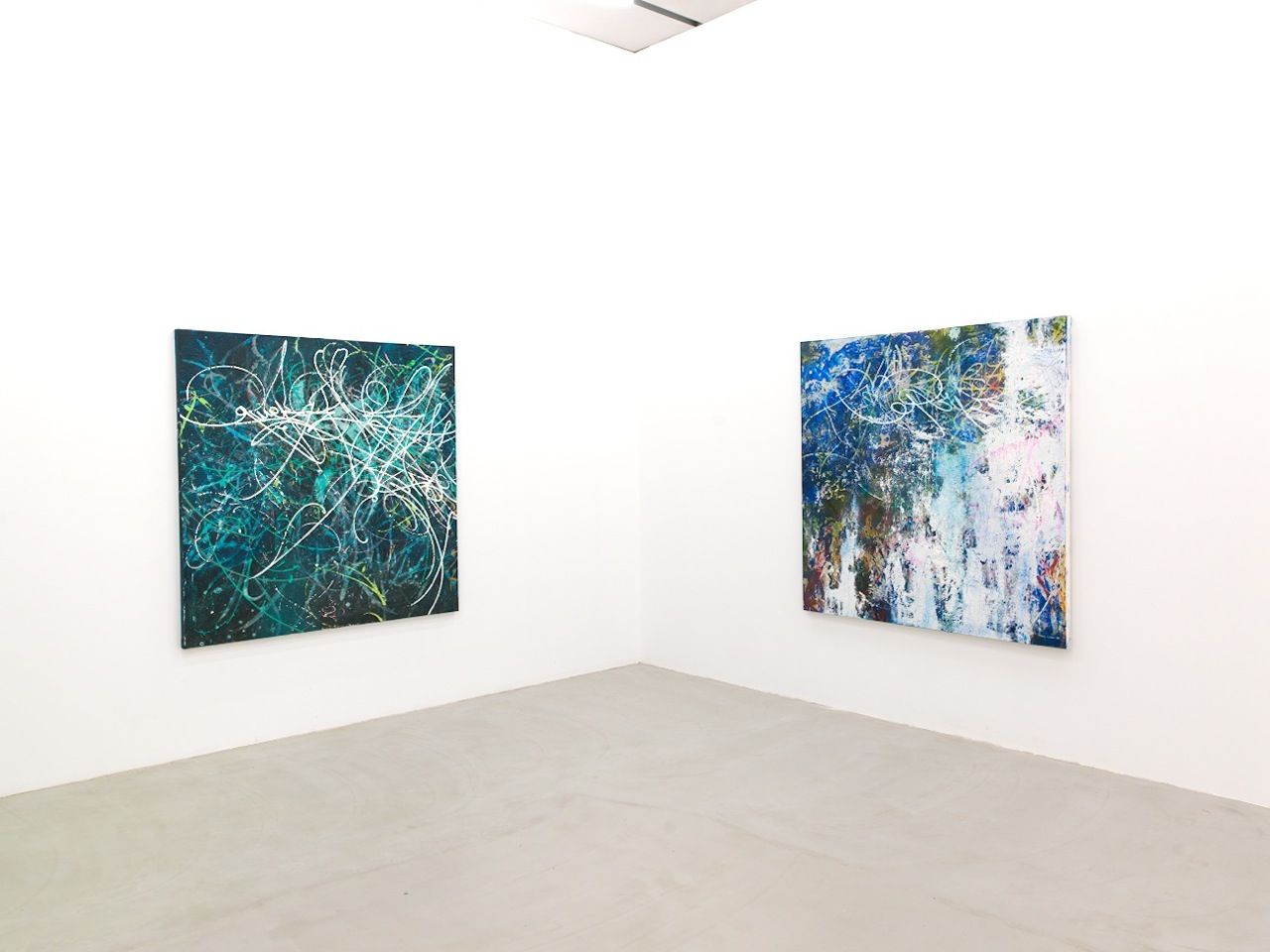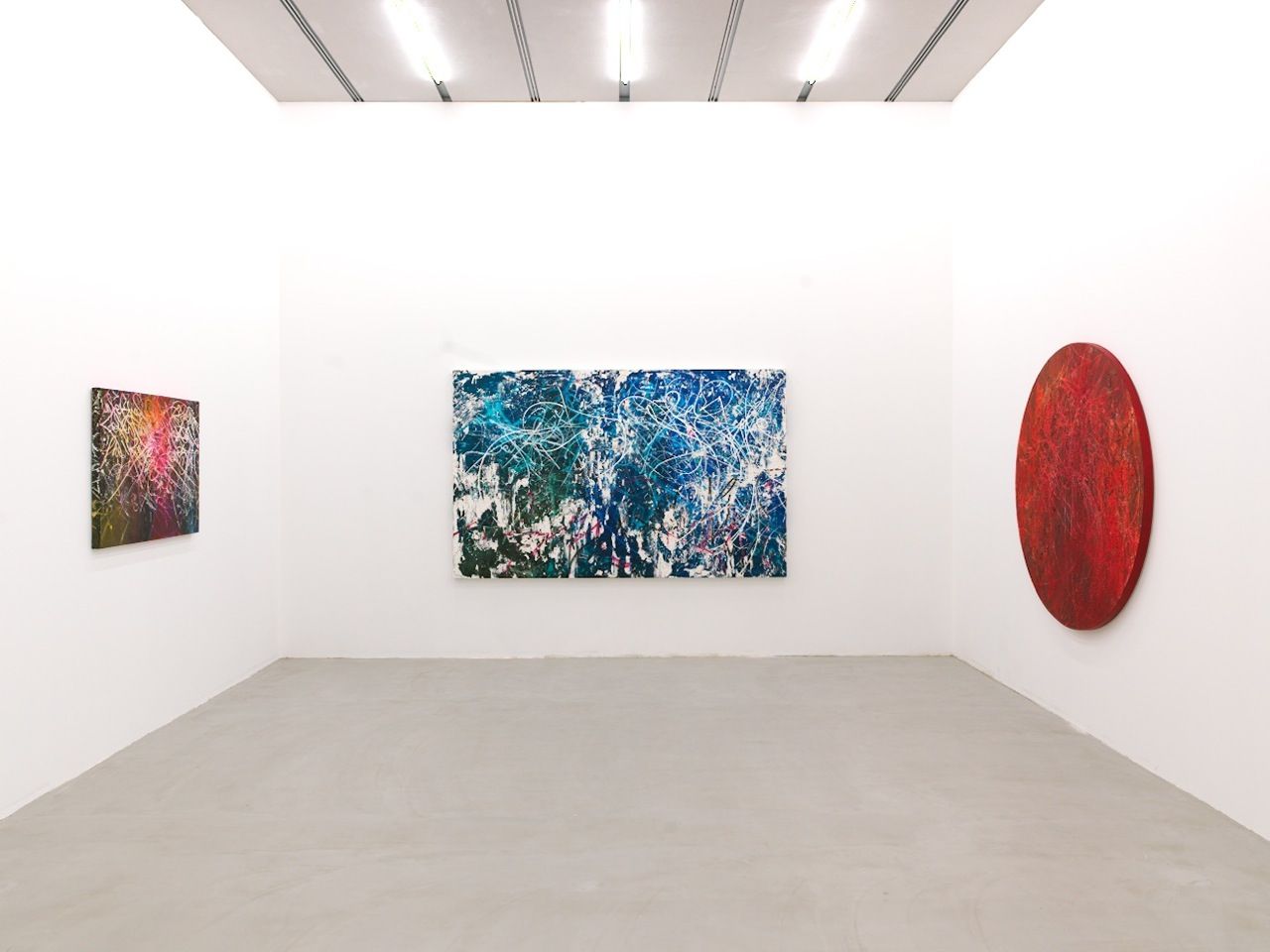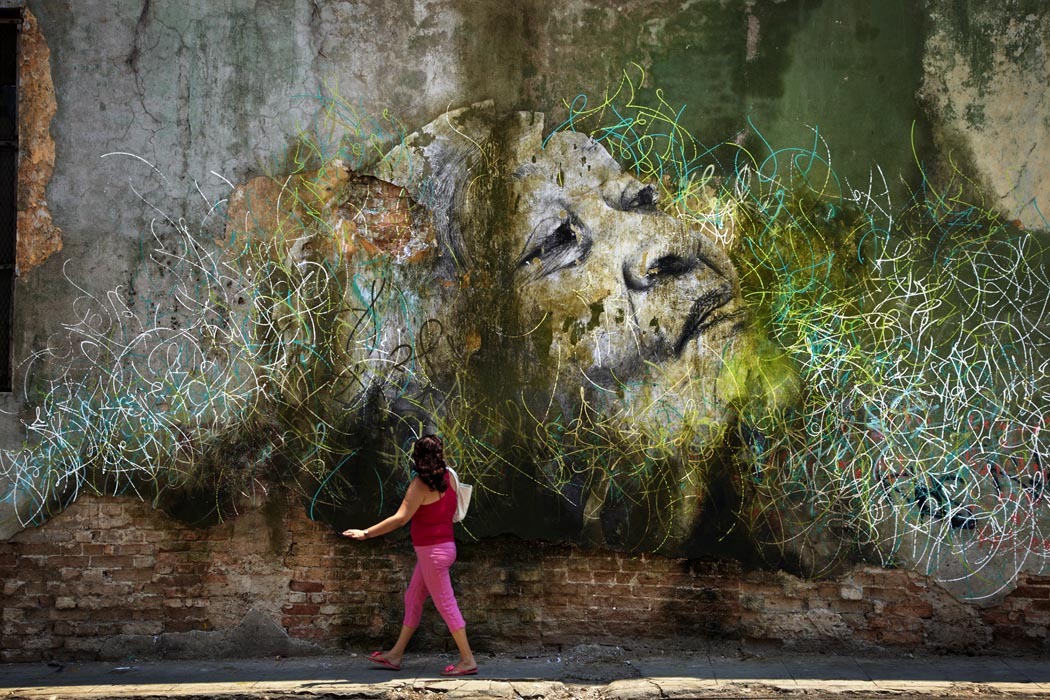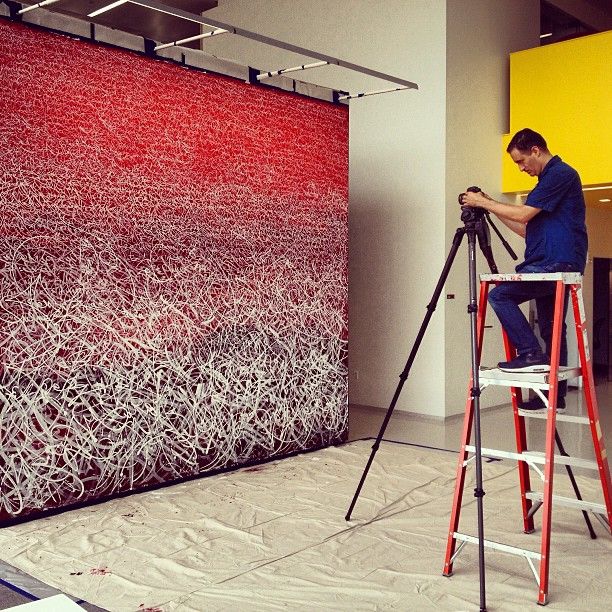|
|
Post by wimbledongreen on Feb 12, 2013 15:40:09 GMT -8
How about "flopping"? Flipping = selling quickly for a profit. Flopping = selling quickly for a loss. Flopper = someone who buys artwork and sells quickly for a loss. Used in sentences: I'm flopping a Parla canvas I just bought at Haunch for 50K!  Did you hear? Larry just flopped his Parla for 50K.  Did you see the flopper on eBay trying to sell his Parla canvases?  How quickly do you think I can flop that Parla canvas from Haunch?  What would be the negative term for selling at a loss soon after purchase? 'dropping'? 'cutting'? I might be partial to 'letting', as in bloodletting but also nice in that it captures the whole renting aspect of art collecting, as in no one actually buys the work they just rent it for a time. Using in a sentence: This work is lettable. |
|
|
|
Post by mose on Feb 12, 2013 15:44:53 GMT -8
That works much better. Nice.
|
|
|
|
Post by drevil on Feb 14, 2013 21:36:27 GMT -8
Flopper = exactly. Parla should be bought on the secondary market. Primary is for idiots.
|
|
|
|
Post by rizza79 on Feb 15, 2013 10:54:47 GMT -8
Flopper = exactly. Parla should be bought on the secondary market. Primary is for idiots. Could you elaborate? This sort of thing is always intriguing and good conversation |
|
|
|
Post by ricosg11 on Feb 15, 2013 10:57:01 GMT -8
I assume he is saying you can buy cheaper on secondary than in primary. Which I have found to be true.
|
|
|
|
Post by rizza79 on Feb 15, 2013 10:59:26 GMT -8
I understand. Just was trying to have a little discussion about why is all. It's definitely not a good model and certainly happened for the wrong reasons, but I understand nonetheless
|
|
|
|
Post by ricosg11 on Feb 15, 2013 11:04:23 GMT -8
ohh my bad. Misunderstood you.
|
|
|
|
Post by mose on Feb 15, 2013 12:46:19 GMT -8
Two major, what I would call appropriate, models I've seen for gallery pricing.
1. The gallery has the low price, and access is the issue
2. The gallery has the high price, and it buys you a level of selectivity and quality
In the first model, good patrons get rewarded with Richard Prince Nurse Paintings at $80k, and multi-million dollar profits down the road. Or, more recently, a Tauba Auerbach fold painting at $80k that would be $400k at auction the very next day. But, good luck for a mortal to be considered a good patron.
In the second model, similar to the instant depreciation of a new car, a work of art can be worth 50% less(or even lower) the moment it leaves the door. I think this is the more traditional practice, as secondary markets generally didn't exist for contemporary art. In the 1940's-1960's, people knew they would not be able to move artwork they purchased, which may be one of the reasons that the art market was small and collectors few, far between, and generally very wealthy. These collectors bought art knowing that it wasn't 'worth'(resaleable) for anywhere near the purchase price.
From my reading, i don't think this concept really started to change until the 1970's, and especially in the aftermath of the (in)famous Scull auction on October 18, 1973, when 50 contemporary works. That's when short-term profits in contemporary art became a concept understood by all. It's also when artist resentment of collectors became very real, as the $200 an artist like Rauschenberg got paid for a work made him very bitter when compared to the $10,000 pocketed by the collector who had later re-sold it, with nary a cent of that going back to Robert.
Both very much have their purposes for artists, as they force loyalty. In the first, no one wants to lose their 'good patron' status if they can avoid it, lest they never gain access again. In the second, the automatic haircut a re-sell would result in keeps people holding the work and cheerleading for the artist.
The approaches I really don't like, and don't consider valid, are the 'auction chase'(raising prices instantly to mirror a good auction result) and the 'hollow'(the defining 'gallery' style exhibited in the urban art run-up. ride hype up with the prices until you have narrowed the collector base so much that the artist's output can no longer be supported without a major, and painful, course-correction, let down both patrons and artists in the long-run).
|
|
|
|
Post by drevil on Feb 15, 2013 12:48:51 GMT -8
My two pennies from a recent offline conversation with mose about a different artist below. Similar analysis.
I can see why galleries might do this 'pricing of work higher than auction pricing schtick'. It basically builds in an inherent penalty on the buyer to selling the work too quickly on the secondary market. Buying the work from the gallery and then selling before the artist's general market moves quite a bit higher means the buyer takes a bath financially on the original art purchase. People like to avoid losses (generally speaking), so most buyers will sit tight until secondary market prices reach a point that they are no longer taking a monetary loss on the primary market purchase. I have no idea if this is reality at all or just my rambling theory.
|
|
|
|
Post by rizza79 on Feb 16, 2013 16:44:44 GMT -8
a lot of what was mentioned above in mose and drevil post definitely relates to the Parla thing. I think all parties were equally guilty. Gallery, collectors, and artist. Everyone was out for themselves and looking to make a quick buck. Not for a minute was anyone thinking about what this could do in the long run.
I think the reason that there was so much discrepancy in Parla's pricing on secondary was because some people just wanted out due to paying such high prices from Elms, etc and others were able to buy a lot of work at behind the scenes prices which enabled them to sell at what appeared to be lower than perceived primary pricing.
IMO I still think his primary is over priced by abourt50% but I honestly believe his skills will ultimately help him move past this situation and make it a small chapter of his career.
Regarding the recent show, I loved some of the canvas works. I'd still love a large one at some point.
|
|
|
|
Post by onemandown72 on Feb 19, 2013 2:10:03 GMT -8
I felt his last show was ok - his work has developed and changed slightly. The different colour pallet, more of the rags, the concrete pieces and paper pieces allow him to illustrate his diversity. How far he felt some personal obligation to do this, due to bring at Haunch would be interesting to find out. I'm not sure if the change in all of this grabbed me as I hoped it would. Opposed to this was my feelings at the installation, this was superb, raw, powerful and a great way to start the show (and possibly overwhelming the other work), I get the impression when Parla had to do this the pressure of time and getting it right in one go really focuses his mind and brings out the best in him. It feels a far more organic and effective piece than a lot of the other work.
|
|
|
|
Post by mose on Feb 24, 2013 21:55:44 GMT -8
|
|
|
|
Post by mose on Mar 21, 2013 16:04:55 GMT -8
So, what's the view on the show in Japan?
|
|
|
|
Post by sleepboy on Mar 21, 2013 19:26:26 GMT -8
A peek.  |
|
|
|
Post by mose on Apr 5, 2013 16:46:29 GMT -8
|
|
|
|
Post by carlito on Apr 6, 2013 19:41:39 GMT -8
some lovely pieces in the Japanese show, although as already discussed the pricing for the main part just seems surreal. Having said that one rather lovely piece on paper and one smaller canvas were both under $15k which is something! Although still over priced to my mind by a good $3-4k in each instance!
|
|
|
|
Post by sleepboy on Apr 8, 2013 20:56:56 GMT -8
Posted up some photos Parla sent us here from the Japan show.    |
|
|
|
Post by afr1ka on Apr 9, 2013 6:54:31 GMT -8
love the red circle
|
|
|
|
Post by afr1ka on Apr 10, 2013 19:28:12 GMT -8
I CAN'T WAIT FOR THIS ONE - MUST SEE IF YOU ARE IN NYC  brycewolkowitz.com/h/ brycewolkowitz.com/h/JR/ José Parlá The Wrinkles of the City, Havana Cuba May 7 - July 12, 2013 Opening reception: Tuesday May 7, 6-8 pm Bryce Wolkowitz Gallery is pleased to present The Wrinkles of the City, Havana, Cuba, a recent collaboration between JR and José Parlá. The Wrinkles of the City was started by JR in Cartagena, Spain and has been reprised in Shanghai, Los Angeles, and most recently, Havana. In 2012, JR and Parlá photographed and interviewed dozens of senior citizens who lived through the Cuban revolution, flyposting colossal black-and-white portraits of their subjects on the walls of city buildings. Parlá, who is of Cuban descent, interlaces the images with palimpsestic, calligraphic writings and color. In a city devoid of commercial imagery, JR and Parlá’s enormous yet intimate portraits offer a stunningly humane contrast to the endless repetition of political icons. This exhibition will consist of twelve large portraits from the Havana iteration of The Wrinkles of the City project along with a site-specific installation. Since 2004, the French artist JR has traveled the world creating monumental portraits of ordinary citizens. He is widely considered one of the most influential and visionary of all street artists. JR was awarded the prestigious TED prize in 2011. A documentary film about JR’s Inside Out, a global art project providing people the opportunity to share their portrait and a statement of what they stand for, will be showing at the 2013 Tribeca Film Festival. His other projects include Women Are Heroes, Face 2 Face, and Portrait of a Generation. José Parlá has received critical acclaim for his paintings, which lie at the boundary between abstract marking and calligraphy. Composed from layers of paint, gestural drawing and found ephemera, his work evokes the histories of urban environments. He was recently commissioned by the Barclays Center in Brooklyn (January 2013) and the Brooklyn Academy of Music (September 2012), as well as having recently held solo exhibitions at Haunch of Venison (London, UK) and Yuka Tsuruno Gallery (Tokyo, Japan). In 2013, Parlá was added to the collection of the British Museum, (London, UK). José Parlá lives and works in Brooklyn, New York. The Wrinkles of the City, Havana, Cuba, which was commissioned for the 11th Havana Biennial, has been made into a book published by Damiani/Standard Press, as well as a film, which will be on view at the gallery. |
|
|
|
Post by mose on May 22, 2013 16:38:19 GMT -8
friend pointed it out, but it seems Parla and OHWOW are no longer together. Aurel Schmidt's name has vanished as well.
|
|
|
|
Post by rizza79 on May 23, 2013 5:47:25 GMT -8
friend pointed it out, but it seems Parla and OHWOW are no longer together. Aurel Schmidt's name has vanished as well. think this was in the making for awhile, at least the Parla part. I got the sense that the gallery was more friends with Jose than anything. as for Aurel, she seems to be in a state of flux in terms of representation. her Pace show was cancelled and I haven't heard anything on the schedule or seen any pieces since....... |
|
|
|
Post by sleepboy on Jul 14, 2013 22:13:04 GMT -8
New mural at the North Carolina State University's Hunt Library. 
|
|
|
|
Post by sleepboy on Jul 26, 2013 16:31:09 GMT -8
|
|
|
|
Post by saL on Jul 27, 2013 10:18:39 GMT -8
still regretting not making it to the show while I was in Tokyo.. maybe the book will help?!  .. thanks for the heads up! |
|
|
|
Post by sleepboy on Aug 7, 2013 22:53:39 GMT -8
Present to Parla from JR for his birthday.  |
|